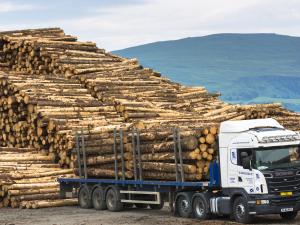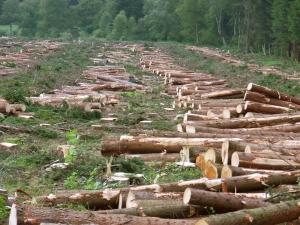Illegal logging is an enormous problem in Peru, as shown in recent studies and reports highlighting the phenomenon’s impact on the country’s forests, including an Al Jazeera documentary exploring the links between illegal logging and corruption. A recent government audit found evidence of timber laundering, where exporters make illegally logged wood appear to be legitimately harvested. This ruse involves the concoction of “ghost trees” – trees that never existed, except on paper.
While not a new problem, the scale and pervasiveness of timber laundering in Peru is astounding. The Peruvian government’s Independent Forest Sector Oversight Agency (OSINFOR) determined that more than 8,000 trees that had been reported as harvested by Peruvian timber exporters between March and May 2014 never existed. Peru’s Amazonas 2014 Operation found an estimated 47 million board-feet of timber were associated with illegal practices, enough wood for the frames of nearly 3,000 medium-to-large single family homes in the U.S. Overall, OSINFOR found evidence of illegal practices in an astonishing 93.75 percent of operations they audited.
The “ghost trees” problem starts when a forest consultant prepares a management plan for a timber harvesting operation. By exaggerating the number of trees available, timber harvested elsewhere can be approved as legally harvested, if the government approves the management plan without verifying the inventory data.
Even though it is evident that this timber laundering is happening, it is challenging to identify the exact origin of these ‘ghost trees’. We know that most illegalities documented by OSINFOR were in the Loreto and Ucayali regions. The missing trees may have been harvested from plantations or forest conversion operations, which are out of OSINFOR’s scope of work, or more likely from protected areas and their buffer zones such as the Cordillera Azul, the Sierra del Divisor and Alto Purus, or even from indigenous reserves.
Implications for U.S. Buyers
The top timber imports to the United States from Peru are sawn wood and wood used for flooring, the same products at issue in the recent Lacey Act case, in which Lumber Liquidators pled guilty to importing illegally sourced timber from the Russian Far East.
Here’s what U.S. customers can do to minimize the risk of illegally sourced wood in their supply chains:
- Know the problem and understand its context. Reports and other materials on companies that have violated the law include:
- The first Lacey Act misdeclaration case involving Peruvian hardwoods in 2009;
- The Environmental Investigation Agency’s 2012 investigations on the illegal trade of CITES-protected cedar and mahogany; and
- The latest reports of rampant, industrial-size illegal logging operations in the Ucayali Region.
- Consult trade associations. The International Wood Products Association, for instance, is rolling out a due diligence training for members.
- Request documentation from your in-country suppliers, including transportation guides and forest management data. With that information:
- Look up the supplier company in OSINFOR’s Forest Management Information System (SIGO) to find out if OSINFOR has detected illegalities or not in the forest operation based on their field verifications (available in Spanish and English via Google Translate).
- Look up the name of the forest consultant who prepared the forest management plan in OSINFOR’s report to determine if they have been linked to providing false information (starting on page 43).
Better News on the Horizon?
Operation Amazonas 2014 adds to the long list of illegal logging investigations in the Peruvian Amazon, but it is particularly remarkable because for the first time, it was a coordinated effort led by the Peruvian Customs Agency (SUNAT) that involved other government agencies including OSINFOR, the Office of the Environmental Prosecutor in Peru, the World Customs Organization and Interpol. These types of efforts should be sustained and scaled.
Better news could be on the horizon. Since 2006, the United States and Peru have been working through a bilateral cooperation agreement in the context of the U.S.-Peru Free Trade Agreement to strengthen governance in the forest sector. As a part of this collaboration, new environmental authorities have been established, including OSINFOR and the Peruvian Forest Service (SERFOR); the forest sector legal framework has been overhauled; the Peruvian government has been working on the design of a national forest and wildlife information management system that will include a supply chain tracking system; and SERFOR is leading an initiative seeking to curb domestic demand for illegal timber through a national legal timber pact. For now, OSINFOR’s public records and databases are key tools to help U.S. buyers exercise the due care required by Lacey by identifying risky sources.
Finally, although illegal logging is a pervasive problem, there are timber producers in Peru who comply with the law. It is important to support these businesses, rather than penalizing them for the actions of illegal operators. Information transparency is key to identify these actors, and a way to start is by looking at SIGO’s list of producers operating in compliance with the law.
This article was originally published on the World Resources Institute blog.


